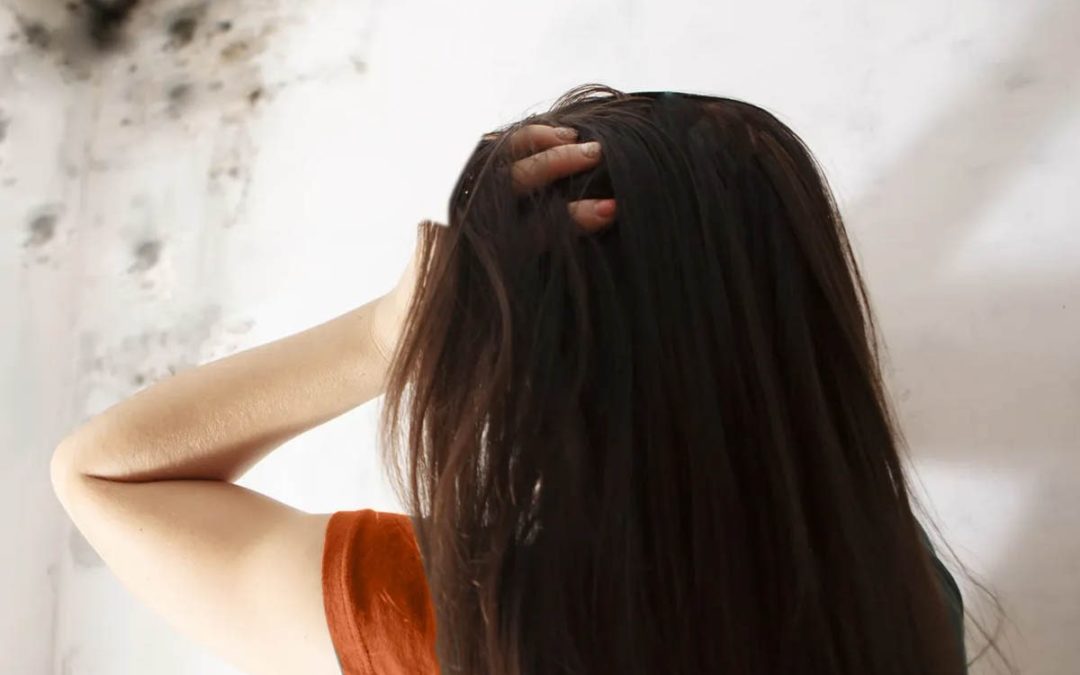toxic mold
Witnessing mold in your house growing on a large scale is an important matter as far as health is concerned. Mold growing on an old piece of bread can often freak out children. But if you have mold in your home, it is usually a high-level problematic condition. Mold might go unnoticed at first as it grows usually in the edges and corners of your home. But if you start witnessing weird health issues, then there must be signs that the mold in your home has become toxic.
Signs that you have toxic mold in your home are important to take note of. This is because mold is not always visible and is often hard to spot. If you wish to stay away from the harmful effects of mold, it is important to clean the entire house properly every week.
Mold effects on our body
Toxic mold can bring with it, some of the most serious health problems. Usually all molds and mildews cause health issues, especially to children. These are more harmful to people who are prone to allergies. Usually, when you have mold in your home, you will feel fresh as soon as you step out of your home. This is a sure shot indication that there is the presence of this toxic growth somewhere in your home.

However, there are more signs that say you have mold in your home. We bring you a long list of symptoms that will help you realize that you should do mold removal pretty quick. The signs can help you in identifying potential problems. These are best to give attention to quickly. If things out of the hands, you can simply go for a scheduled test. But identifying the signs yourself is good rather than spending money on hiring professionals from a testing company. So, let’s start with the list:
Smell
If your home keeps on smelling like it never used to, you should act quickly. Usually, a musty smell is a clear indication of mold or mildew growth that is turning to be toxic. You will recognize the smell of mold and if you smell it, then it is there somewhere even if not visible. This is a general warning to take action. If you smell mold, you are prone to health risks in your home.
Your brain is affected

Believe it or not, mold can have a negative impact on your brain. The presence of toxins in the mold can alter your brain activity. This often leads to several problems like memory loss or lack of concentration. A study on mice suggested how inhaling mold spores can make us anxious and forgetful. And as the exposure continues, the problem can worsen with time, leading to serious brain defects. This sign is important and can be easily seen in children. If you have a young one at home and he always complains about lack of focus in a particular room or a part of a home, its the best chance that you have toxic mold around.
Fatigue
Your home might be the most comfortable place on earth. But when you feel tired and fatigued all the time in your cozy bed, things might be a little problematic here. Mold might be the reason behind your unexplained fatigue. Toxic mold can cause unwanted fatigue and weaknesses in human beings. The fatigue can increase more in humid days as mold strives on the humidity in the area. You might feel good when coming around the air conditioner or when you are in the fresh air. These are the straight signs of toxic mold growth in your premises.
You have discolored walls in your home

Usually, when toxic molds start spreading, it covers your walls first. And this process becomes visible sooner or later. You may see some distorted color in your walls around the house. The discoloration of walls or your original paint into a light shade is a sign of toxic mold. However, it could be also due to low-quality paint used. Hence, you need to couple the sign with other ones to figure out if its actually toxic mold doing the damage. You can call a professional in this case who can determine the toxics and give you analysis on mold invasion.
Stains everywhere
Mold usually doesn’t have its own distinguishing color. It might appear as a stain in most of the cases. Mold rubs off a surface and then leaves its stain spots. You may also see yellowish patches near sink, washbasins or edges of rooms. This is a sign of mold. One thing you need to be aware of is that molds have different patterns. Some might appear to be more prominent and colored while others hide and appear faded.
You or someone in your family is having a chronic cough

We all know that fever and cough are common problems. They are seasonal syndromes that come and go in a few days. But if someone in your family is facing a chronic cough, toxic mold may be the culprit behind. Mold often causes various types of respiratory-related issues such as asthma, shortness in breath, congestion or sinus. If you are already having an immune suppression problem oral lung disease, you are more susceptible to getting fungal infections due to the toxic mold in your home. Mold travels to our respiratory tract through the air and causes irritation. This leads to chronic coughing that does not go away very easily.
Having skin rashes again and again

Various types of toxic molds are the reason behind itchiness and irritation in several parts of the body. This further leads to irritating rashes. Many people, especially those who are allergic to molds, can face unwanted inflammation, irritation or swell on the skin. Sometimes hives may also appear if there is a presence of toxic mold in your home.
There’s’ a weird smell coming from your chimneys
Chimney’s inner walls remove dangerous creosote buildup. They often clean out the toxic mold as well. But, moisture can accumulate in the porous bricks and mortar chimneys. Also, various rusted chimney caps or parts that need repair or are too old, sweep in rain and snow. This creates a flourishing environment for the mold to grow. Due to this reason, the chimney start smelling weird, especially on days when the wind blows in a certain direction. You can counter this problem by fixing the cap and calling for the chimney sweep that will help extinguish mold issues.
Your eyes are always watery
Mold often travels through the air towards our eyes, nose, and throat. Many people develop allergies towards mold interaction in their body systems. This is very common in the case of eyes. The symptom includes watery and itchy eyes. Other signs such as coughing or nasal congestion also accompany this.
You asthma signs are increasing

If you or someone in your family has asthmatic problems, then mold can make things worse. The spores of toxic mold can travel through the air into your lungs. This triggers severe asthma symptoms. The dampness present in the mold in our houses can be one of the top 5 prime reasons for asthma-related health problems in the US. When you have toxic mold and when it is left untreated, your asthma might get worse. The mold accumulation can cause a serious allergic condition called bronchopulmonary aspergillosis. This deadly allergic reaction causes inflammation and leads to severe coughing, shortness of breath and uncontrolled sneezing.
Your floor becomes slippery
If you love your floors and never leave a stone unturned in their maintenance, you will quickly recognize that soft spot on your floor. You can access the subfloor and check for moisture. This is easy if you have a basement. If such is not possible, you can do some extra efforts to pick up a tile or a section of flooring and check if there is moisture below. The moisture can be any type of mold growth and will spread to other parts of the house as well. If you have a wooden floor, it will start rotting due to mold growth. In such a case, all of the floorings need to be changed. However, a small amount of mold can be repaired and treated with mold remover.
Your little one coughs at night
Baby coughs are normal. But if your baby is coughing continuously at night, then it might be the sign of toxic mold. Infants, when exposed to mold in homes are more likely to develop asthma by the age of seven. You should keep a lookout for important signs such as coughing at night, difficulty in breathing, regular chest colds, whistling sounds when breathing or wheezing that does not go away. You should care for your baby if you face any signs. Consulting child specialists is the first step to check if there is nothing serious.
Conclusion
All of the signs described leading to one or more deadly diseases. If not treated in time, toxic mold can really be a harmful element in our home. Mold produces mycotoxins which are a form of fungus. This is toxic and can be poisonous too. An alarming variety of toxic mold called Stachybotrys chartarum is even more harmful. This black mold is present where there has been no cleanliness for a long time. It is also present in damp basements of abandoned homes. Mold can trigger a number of health issues. It can even cause problems such as diarrhea, breathing issues, headaches, nausea and much more.
The plan of action to eradicate mold should always begin with first identifying the symptoms. After that, every type of mold can be treated with robust cleaning procedures including mold-removal chemicals or treatment products. We hope that this blog will bring in some new information to our readers and will help them detect the signs of toxic mold at an early stage. Do let us know your reviews in the comments section.



